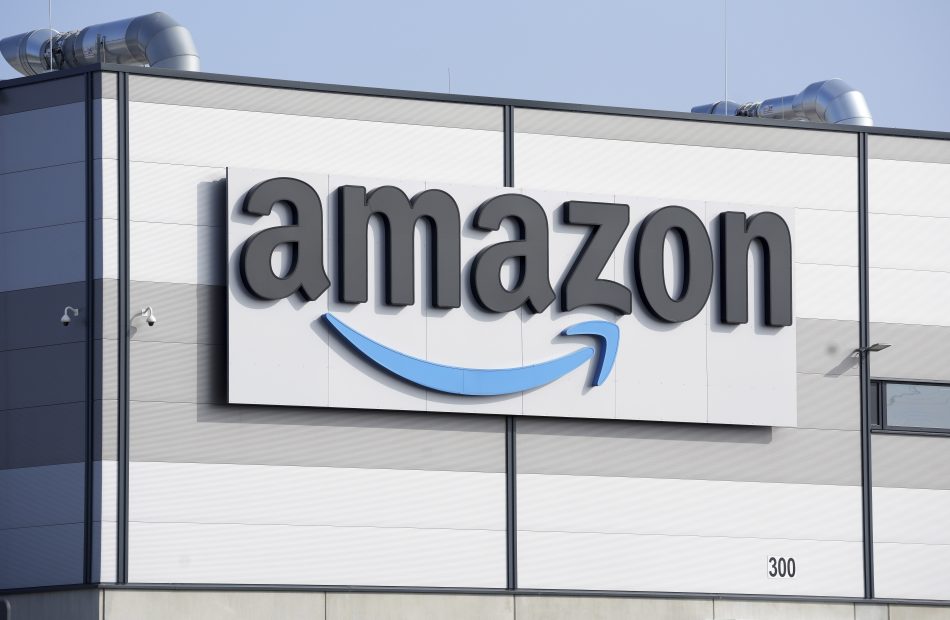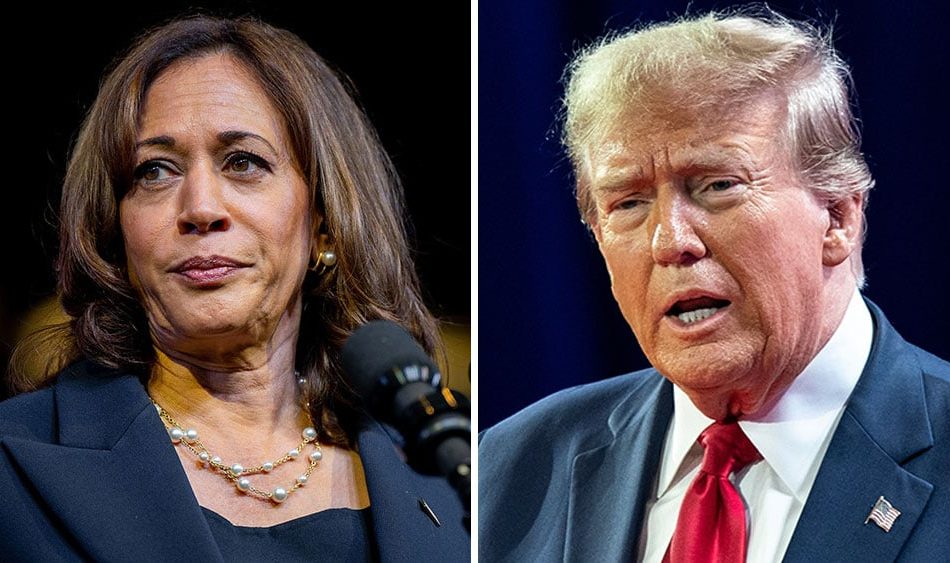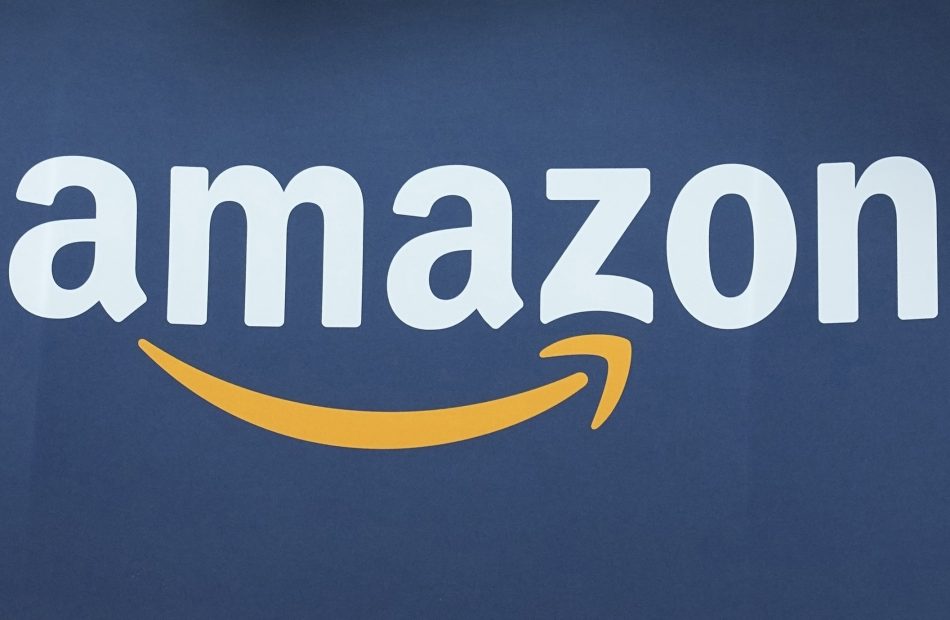Exxon, Chevron top Q3 profit expectations as US oil output hits record high
By Shariq Khan
NEW YORK (Reuters) -U.S. oil producers Exxon Mobil and Chevron posted better-than-expected third-quarter profits on Friday, outperforming their European rivals, as record U.S. oil production cushioned the blow from a plunge in fuel margins.
The two focused on expanding oil and gas production as rivals BP and Shell spent heavily on wind, solar and renewables that have yet to pay off. Both U.S. oil firms have meanwhile benefited from acquisitions of smaller oil producers.
Still, their surging production could soon face a challenge from uncertain demand, especially in top oil importer China, and the potential for OPEC to lift production curbs as soon as next month. The group is expected to delay a plan to add 180,000 barrels per day amid concerns over weak demand and oversupply.
Exxon pumped a record 4.6 million barrels of oil equivalent per day (boepd) in the third-quarter, up more than 24% from a year-ago, as its $60 billion bet on Pioneer Natural Resources and purchase of Denbury paid dividends.
Chevron, whose $53-billion takeover of Hess has been held up, posted a 7% increase in third-quarter output to 3.36 million boepd, mostly from gains in its U.S. shale business which pumped a record 1.61 million boepd. It added a drilling rig in the Permian basin last quarter and will begin a production expansion in Kazakhstan next quarter.
Both companies reported lower year-over-year profits as weak global refining margins that hit BP and TotalEnergies hard and also cut their oil earnings. Exxon’s third-quarter profits were 5% lower than last year, while Chevron’s fell 21%.
But their declines were smaller than Wall Street expectations and not as steep as top European rivals. BP this week reported a 30% drop in profits from a year ago, and TotalEnergies posted a 37% decline in adjusted net income.
Exxon’s $1.92 per share profit was four cents higher than Wall Street’s outlook, whereas Chevron’s $2.51 per share adjusted income was well ahead of analysts’ average estimates of $2.42, according to LSEG data.
Chevron shares gained 3.1% to $153.41 in midday trading while Exxon was largely unchanged at $116.77.
Both pumped record amounts of oil and gas from the Permian basin, the top U.S. shale field. Exxon’s output from the basin, which spans across Texas and New Mexico, hit a record 1.4 million boepd.
Exxon is not planning to take its foot off the gas.
“We see tremendous opportunities to invest in profitable growth in both our existing and new businesses,” said finance chief Kathryn Mikells.
Boeing slashes DEI department in latest staff shake-up
This story originally appeared on AirlineGeeks.com
Boeing dismantled its global diversity, equity and inclusion department on Thursday, according to a report by Bloomberg citing sources familiar with the matter.
The report stated that staff from Boeing’s DEI office will be combined with another human resources team focused on talent and employee experience. Sara Bowen, Boeing’s vice president leading the DEI department, also announced her resignation from the company on LinkedIn Thursday.
“Today I turn in my blue badge,” Bowen said in her LinkedIn post. “It has been the privilege of my lifetime to lead Equity, Diversity, and Inclusion at the Boeing company these past 5+ years. Our team strived every day to support the evolving brilliance and creativity of our workforce. The team achieved so much – sometimes imperfectly, never easily – and dreamed of doing much more still. All of it has been worth it.”
The DEI department is the latest staffing cuts within the company as 17,000 jobs are reportedly on the chopping block for layoffs by early next year.
AirlineGeeks has reached out to Boeing for comment.
The move comes as striking members of the International Association of Machinists and Aerospace Workers (IAM) are scheduled to vote on a new contract offer Monday. Over 33,000 IAM members have been on strike at Boeing locations in Washington, Oregon and California since Sept. 13.
According to a news release from IAM, the new contract proposal would deliver a 38% wage increase over four years and a $12,000 ratification bonus. It would also reinstate Boeing’s Aerospace Machinists Performance Program (AMPP) incentive plan with a guaranteed minimum annual payout of 4% for both 2024 and February 2025.
Additionally, the contract includes a 401(k) employer match of 100% up to 8%, a special company retirement contribution of 4% into 401(k) and a $105 pension multiplier per year for those vested in the pension plan.
The union rejected a previous contract from Boeing after putting it to a vote last week, though sentiment may now be growing toward accepting the newest offer. IAM District 751 posted an endorsement of the newest offer on X/Twitter, calling for members to approve the new contract.
“Your Union is endorsing and recommending the latest IAM/Boeing Contract Proposal,” IAM District 751 posted. “It is time for our Members to lock in these gains and confidently declare victory. We believe asking members to stay on strike longer wouldn’t be right as we have achieved so much success.”
IAM District 751 President Jon Holden and IAM District W24 President Brandon Bryant issued the following joint statement in a news release from the union:
Netflix has 'won' the streaming wars — here's how others will compete
It’s no secret the overall media and entertainment industry has struggled in recent years, burdened by labor strikes, profitability challenges, and a transition to streaming that’s upended some of the most well-known corporate behemoths.
One company, though, has thrived amid the various changes: Netflix (NFLX).
The streaming platform beat Wall Street expectations across every major financial metric in its third quarter results on Oct. 17, with shares surging to all-time highs. The stock is up more than 50% since the start of the year.
Compared to other players, Netflix’s subscriber count and profitability stand out.
The streamer has added more than 50 million paying subscribers since launching its password crackdown in May 2023. Its projected full-year operating margins are expected to hit 27%, with management hinting the company has the potential to eventually secure margins similar to broadcast networks, which historically have been in the range of 40% to 50%.
And in the first three quarters of 2024, Netflix pulled in roughly $6.9 billion in net income. Its competitors aren’t even close.
Disney (DIS) and Paramount Global (PARA) just reported their first quarter of profits in their respective streaming businesses earlier this summer. A shift for the industry, yes, but not a cure-all for the problems that have plagued traditional media, with Comcast (CMCSA) the most recent company to weigh spinning off its cable networks.
“Netflix is clearly running away with the ball and the media-based streaming companies are struggling to even get on the field,” Barton Crockett, managing director at Rosenblatt Securities, previously told Yahoo Finance.
Other analysts have piled onto that thinking, declaring the infamous streaming wars officially over.
“Netflix won the streaming wars,” MoffettNathanson, one of the leading equity research firms for the tech and media sector, said in a note penned by analyst Robert Fishman last week. “The media space right now is defined by a dichotomy in which Netflix stands as a lone exception.”
Bloomberg Intelligence analyst Geetha Ranganathan agreed, recently telling Yahoo Finance’s Market Domination that the company has “undoubtedly” secured its No. 1 position.
The “streaming wars,” which unofficially kicked off in November 2019 following the launch of Disney’s flagship streaming platform, set off an accelerated race for content, talent, and, most importantly, subscribers.
The goal was to attract as many users as possible. That led to an era of overspending as platforms, both new and established, raced to lure top producers and secure the most sought-after shows.
Amazon, Google show profit growth can quiet fears over heavy AI spending
The quarterly results this week of Amazon (AMZN) and Google parent Alphabet (GOOG, GOOGL) provided an AI-era playbook for making investors patiently wait for results on massive infrastructure spending.
Alphabet dazzled Wall Street on Tuesday with earnings that beat analysts’ estimates on the top and bottom lines, helped by strong growth in its cloud business. The company posted profit and sales increases of 37% and 15%, respectively, compared to the year prior.
Even as investors in recent months have expressed some impatience with the tech industry’s enormous investments in AI technology, Google showed that a dominant performance of its core business can alleviate those concerns.
Amazon, too, offered a resounding earnings beat. The company posted earnings per share of $1.43 on revenue of $158.9 billion. Analysts had expected earnings per share of $1.16 on revenue of $157.29 billion. The stellar report helped offset lingering concerns about mounting capital expenditures.
Amazon CEO Andy Jassy said on an earnings call Thursday that “as the market matures over time, they’re going to be very healthy margins here in the generative AI space.”
Amazon said it expects to spend $75 billion in capital expenditures in 2024 and Jassy said the company plans to spend “more than that” in 2025.
The e-commerce giant’s approach to selling AI spending was also helped by claims that new revenue has already arrived. While Amazon has not disclosed exact figures for AI-related sales, Jassy has said the AI business inside of its cloud unit has generated several billion dollars. And on Thursday he added that the business is growing at a “triple-digit year-over-year percentage.”
But investors have not given all the big-spending tech companies the same leeway when it comes to ballooning capital expenditures.
Microsoft (MSFT) and Meta (META) were met with a more unforgiving investor response this week, even as both tech giants beat Wall Street’s expectations on earnings and revenue. Investors sent both stocks lower after their respective reports. Wall Street recoiled after executives of both companies said they expect capex to continue increasing in the quarters to come.
Meta notably said the company expects significant capital expenditure growth next year and revised its expectation upward for 2024 capex. The uneasiness among investors harkens back to Facebook’s prior spending spree, when Reality Labs lost more than $13 billion and shares in the company tanked 60% in 2022. Zuckerberg has since improved the company’s financials and its standing on Wall Street, but he’s also prompted a fresh round of jitters.
IRS increases 401(k), other retirement plan contribution limits for 2025
The Internal Revenue Service (IRS) on Friday announced that it increased the amount that individuals can contribute to their 401(k) and other retirement plans to account for inflation.
Each year, the IRS reviews tax thresholds and limitations for various retirement accounts and considers making a cost-of-living adjustment based on the impact of inflation since the previous change occurred.
For the 2025 tax year, the IRS is increasing the annual contribution limit for 401(k) plans by $500 from the current limit of $23,000 in 2024 to $23,500 in 2024.
Those limits also apply to several other retirement plans and will undergo the same increase for the 2025 tax year, including 403(b) retirement plans, governmental 457 plans and the federal government’s Thrift Savings Plan.
Irs Sets New Tax Brackets, Raises Standard Deduction For 2025
The IRS also considers adjustments to the contribution limits for Individual Retirement Accounts (IRAs), including traditional and Roth IRAs. However, the IRS will hold the IRA annual contribution limits constant from 2024 to 2025 at $7,000. It’s also maintaining the IRA catch-up contribution limit for individuals aged 50 and over at $1,000 for 2025.
The catch-up contribution limit that applies to employees aged 50 and up enrolled in most 401(k), 403(b), governmental 457 plans and the Thrift Savings Plan will remain at $7,500 for 2025. Workers who are 50 and older can generally contribute up to $31,000 annually to those retirement plans starting in 2025 under changes made with the enactment of the SECURE 2.0 Act of 2022.
Yellen Touts Irs Enforcement As Helping Close The Budget Deficit
That law also created a higher catch-up contribution limit for workers aged 60 to 63 who participate in those plans — which will be increased to $11,250 instead of $7,500 in 2025.
The IRS also adjusted the thresholds under which taxpayers can contribute to a traditional IRA and receive a tax deduction for their contribution.
For individual taxpayers who are also covered by a workplace retirement plan, the traditional IRA contribution tax deduction phase-out range is being increased to between $79,000 and $89,000 — up from $77,000 and $87,000. For married couples filing joint tax returns, the phase-out range rises to between $126,000 and $146,000, an increase of $3,000 from last year.
The income phase-out range for taxpayers who are contributing to a Roth IRA increased to between $150,000 and $165,000 for individuals and heads of households — up from between $146,000 and $161,000. For married couples filing jointly, the phase-out range rises by $6,000 to between $236,000 and $246,000.
What This Donald Trump Stock Market Sentiment Indicator Signals Going Into The Election
Shares of Truth Social-parent Trump Media & Technology (DJT) have cratered this week, capping off a 120% surge in October with a whimper just days ahead of the Nov. 5 presidential election. That signals investor sentiment could be hedging in the final countdown to the election as polls show a dead-heat contest between former President Donald Trump and Vice President Kamala Harris.
The Donald Trump-backed DJT stock skyrocketed 119% in October. That includes a drop of almost 10% this week going into Friday’s action.
In the first trading day of November, DJT shares dropped 13.5% to 30.55 during Friday’s market action, after sinking 11.7% to 35.34 on Thursday.
↑
X
2024 Election Investing Strategies: How To Prepare Your Portfolio
The Nasdaq halted trading on the shares more than once early Thursday, as well as earlier in the week. The Trump stock often behaves as a sentiment indicator toward the former president and the strength of his current candidacy. DJT shares hit a short-term high of 46.27 on July 15 following the assassination attempt against the former president. Trump’s lead in the polls peaked soon after, following President Joe Biden’s exit from the 2024 race.
In September, after the presidential debate between Trump and Harris, DJT sank, signaling investor sentiment held that Trump underperformed expectations.
Shares hit a low of 11.75 on Sept. 24 but roared back 200% since then. However, now with just days to go to the election, DJT is sinking once more. Trump’s odds of victory on Tuesday appeared to be improving in recent weeks even as national polls show the two candidates in a statistical tie for the White House. However, the latest CNN poll shows Harris with a significant lead over Trump in the key swing states of Michigan and Wisconsin. In Pennsylvania, the biggest swing state, the two are still neck and neck.
What Trump Vs. Harris Outcomes Mean For S&P 500, Fed Rate Cuts
Donald Trump Stock Surges In October
The Donald Trump stock is among those tracked by the subreddit investor group r/WallStreetBets. Website ApeWisdom shows DJT stock has been among the top-trending issues on r/WallStreetBets throughout this week.
The Donald Trump brand and the value of DJT stock are closely related, as Truth Social launched after X, then called Twitter, shut down Trump’s account following the Jan. 6, 2021, riot at the U.S. Capitol.
The former president holds a 65% stake in Trump Media, worth several billion dollars based on the current stock price. The company reported in August another quarter of sub-$1 million revenue. Meanwhile, Trump made his return to what was Twitter, now renamed X, on Aug. 12 via a conversation with Elon Musk. The former president had previously sworn he would not return to X and would remain on Truth Social.
Trump Media jumped more than 16% on March 26, its first day trading under the DJT ticker, hitting a high of 79.38 intraday. This followed Digital World Acquisition becoming Trump Media & Technology Group after successfully merging with Trump’s tech and social-media platform on March 22. The special purpose acquisition company stock had rallied 35% on the day before the change to “DJT.”
DWAC took Trump Media and Technology Group, or TMTG, public in a reverse merger. After a prolonged battle, DWAC stockholders voted in favor of the special purpose acquisition company’s merger with TMTG. Trump Media is the parent of the conservative social-media platform Truth Social.
DJT shares have advanced more than 100% in 2024, but remain about 30% below their price at the time of conversion.
Please follow Kit Norton on X @KitNorton for more coverage.
YOU MAY ALSO LIKE:
Is Tesla Stock A Buy Or A Sell?
Get Full Access To IBD Stock Lists And Ratings
Learning How To Pick Great Stocks? Read Investor’s Corner
AI Is Fueling A ‘Nuclear Renaissance.’ Bill Gates And Jeff Bezos Are In The Mix.
Amazon stock pops after Q3 earnings beat
Amazon (AMZN) stock closed 6% higher on Friday after the company reported stronger revenue and earnings per share for the third quarter than Wall Street expected.
The company said on Thursday that it expects revenue in a range of $181.5 billion to $188.5 billion in the fourth quarter. Analysts had forecast $186.36 billion in revenue for the quarter. Meanwhile, Amazon said operating income is expected to be between $16 billion and $20 billion during the fourth quarter. Wall Street had projected $17.49 billion.
In the third quarter, Amazon posted earnings per share of $1.43 on revenue of $158.9 billion. Analysts had expected earnings per share of $1.16 on revenue of $157.29 billion. Meanwhile, Amazon’s closely tracked Amazon Web Services unit tallied revenue of $27.45 billion in the quarter, roughly in line with Wall Street’s projections.
“You’ve got the ingredients you needed for the stock to go up,” Arun Sundaram, CFRA senior equity research analyst, told Yahoo Finance.
Sundaram pointed to Amazon’s 11% operating margin, which came in above Wall Street’s expectations of 9.34%, as another key driver of the stock’s move higher after hours. Arun noted that Amazon is able to pull on other levers in its business, like its e-commerce unit or advertising, to help grow margins while it spends on AI.
Amazon’s earnings follow a volatile few trading sessions for Big Tech companies amid other earnings reports as artificial intelligence spending and how each company is managing it has been in particular focus. Alphabet (GOOGL, GOOG) exceeded expectations on the top and bottom lines and posted impressive gains in its cloud and advertising segments, business lines that compete with Amazon.
Meanwhile, Microsoft and Meta (META) had a tougher going. The stocks of both tech giants fell after their earnings Thursday, as investors were spooked by an increase in AI spending, despite both companies beating expectations after the bell on Wednesday.
Meta notably said the company expects significant capital expenditure growth in 2025. On Thursday night, Amazon said it expects to spend $75 billion in capital expenditures in 2024 and CEO Andy Jassy said the company expects to spend “more than that” in 2025. In 2023, Amazon’s capital expenditures were $48.4 billion. Jassy said the increased spending is driven by generative AI, which he described as a “maybe once-in-a-lifetime type of opportunity.”
“The faster we grow demand, the faster we have to invest capital in data centers and networking gear and hardware,” Jassy said on the earnings call when explaining why spending continues to grow. “And of course, in the hardware of AI, the accelerators or the chips are more expensive than the CPU hardware. And so we invest in all that up front, in advance of when we can monetize it with customers using the resources.”
1 Wall Street Analyst Thinks Ford Stock Is Going to $15. Is It a Buy Around $10.50?
Ford (NYSE: F) updated investors with its third-quarter earnings this week, and the report contained some good news. Bernstein analyst Daniel Roeska thinks there are reasons to see the stock rise to his firm’s price target of $15 per share, according to Barron’s.
That would represent a gain of over 40% from the stock’s recent price. But investors shouldn’t overlook some of the not-so-good news also present in Ford’s Q3 earnings release. With the stock dropping after the earnings report, it seems many investors are not, in fact, overlooking Ford’s headwinds.
Start Your Mornings Smarter! Wake up with Breakfast news in your inbox every market day. Sign Up For Free »
Ford continues to see strong results in some areas of its business, most notably with truck sales and its Ford Pro commercial vehicle division. But even a Wall Street bull like Roeska must acknowledge areas where the company continues to struggle. In his report on Monday, the analyst noted those issues, stating:
Management pointed to a host of potential headwinds in Q4 and going into next year, including weaker consumer sentiment, mix shifts, negative pricing, and intensifying EV competition, to name a few.
But there is another area he fails to mention. Ford continues to grapple with product quality issues that are impacting its profitability. Ford CFO John Lawler said warranty costs in Q3 were “slightly lower” compared to the prior-year period, reports CNBC.
Lawler added that it was not the level of improvement the company wanted. While it didn’t disclose the actual figure for this quarter, it follows an $800 million year-over-year jump in warranty costs in the second quarter.
Investors should monitor warranty expenses for notable improvement before buying Ford stock. Those costs were partly to blame for Ford guiding investors to expect just $10 billion in adjusted earnings for 2024. It had previously said to expect a range of $10 billion to $12 billion.
While there is strength in some parts of Ford’s business, the stock won’t likely hit Roeska’s target price until it solves its ongoing quality issues.
Ever feel like you missed the boat in buying the most successful stocks? Then you’ll want to hear this.
On rare occasions, our expert team of analysts issues a “Double Down” stock recommendation for companies that they think are about to pop. If you’re worried you’ve already missed your chance to invest, now is the best time to buy before it’s too late. And the numbers speak for themselves:
Another US oil refinery to vanish with Lyondell Houston plant closing
By Erwin Seba
HOUSTON (Reuters) – Chemical maker LyondellBasell Industries on Friday detailed its long-announced plan to permanently shutter its 263,776 barrel-per-day (bpd) Houston oil refinery in the first quarter of 2025.
The planned closing marks the latest in a wave of U.S. refinery closures as motor fuel demand is expected to peak this decade and decline under pressure from renewable fuels and electric vehicles.
In January, one of the facility’s crude distillation units (CDU) and coker production train will shut, Lyondell refining chief Kim Foley told analysts on a call to discuss third-quarter results.
In February, the second CDU-coker production train, which supplies the gasoline-producing fluidic catalytic cracker (FCC) and ancillary units, will shut, ending motor fuel production, Foley said.
For the fourth quarter of this year, Lyondell plans to run the refinery at 90% of its capacity.
Lyondell originally planned to shutter the Houston refinery in 2023, but extended its life due to strong fuel margins. Last month, rival U.S. refiners Phillips 66 and Valero Energy announced plans to close one California refinery and put two others under review for possible closure in that state.
Phillips 66’s 139,000-bpd Los Angeles refinery will cease production by the end of 2025.
“The refinery, if you think back historically, was originally designed to process in-state California crude production, and that has declined by about 75%,” CEO Mark Lashier said.
Valero CEO Lane Riggs said last month “all options are the table” for the company’s 91,300-bpd Wilmington and 145,000-bpd Benicia, California, refineries. New California laws for maintaining emergency inventories would penalize operators and make their refineries unprofitable, Valero said in a filing with the U.S. Securities and Exchange Commission.
In the last wave of U.S. refinery closures, which occurred between 2017 and 2022, nine crude oil refineries with a combined capacity of 1.2 million bpd were idled or converted to production of renewable fuels.
(Reporting by Erwin Seba in Houston; Editing by Matthew Lewis)









